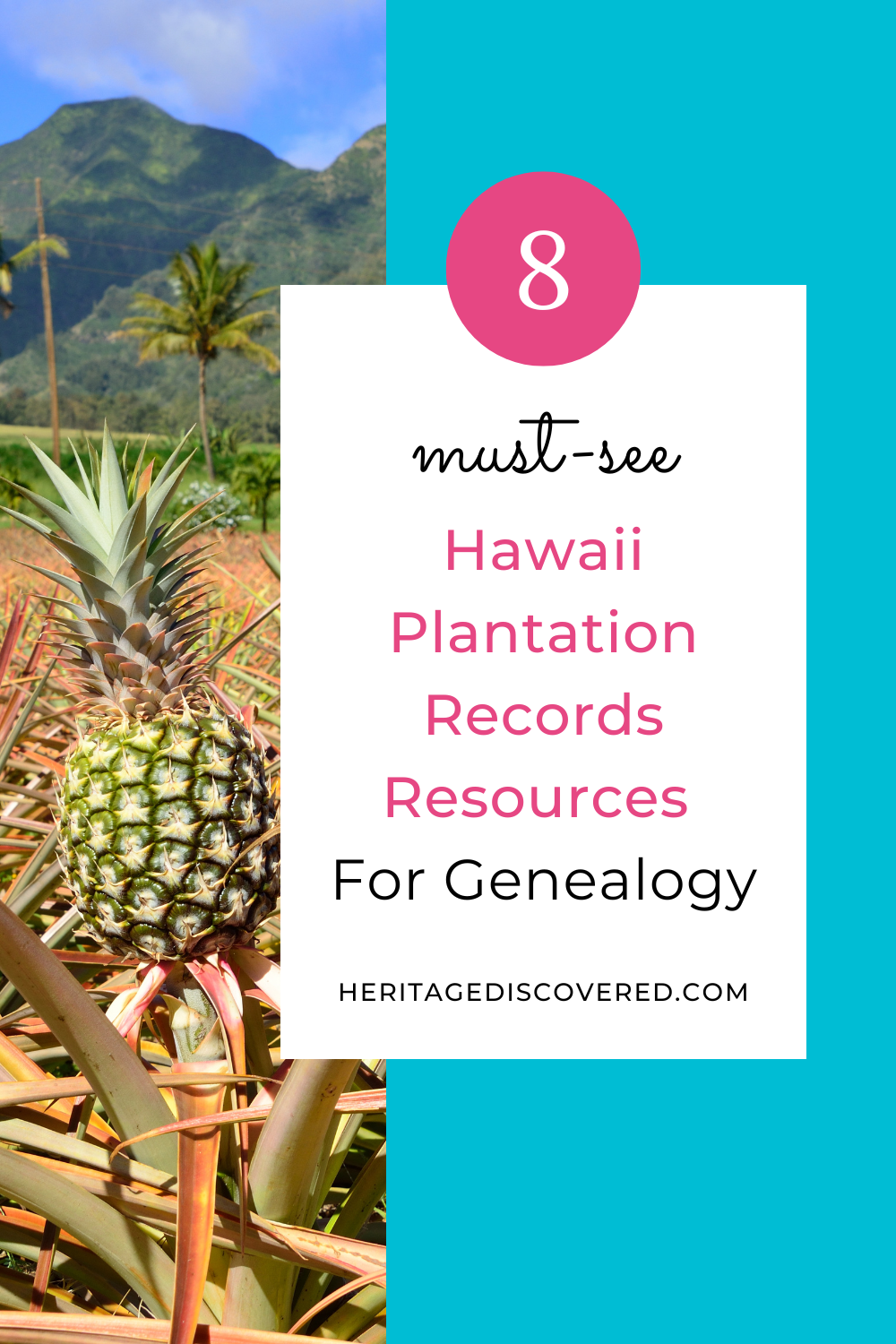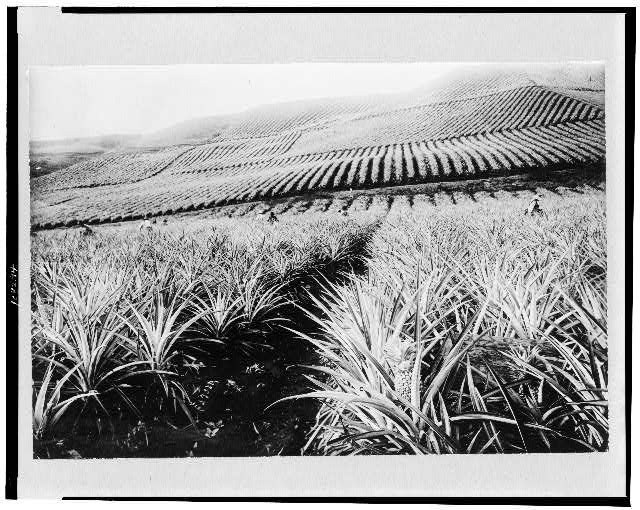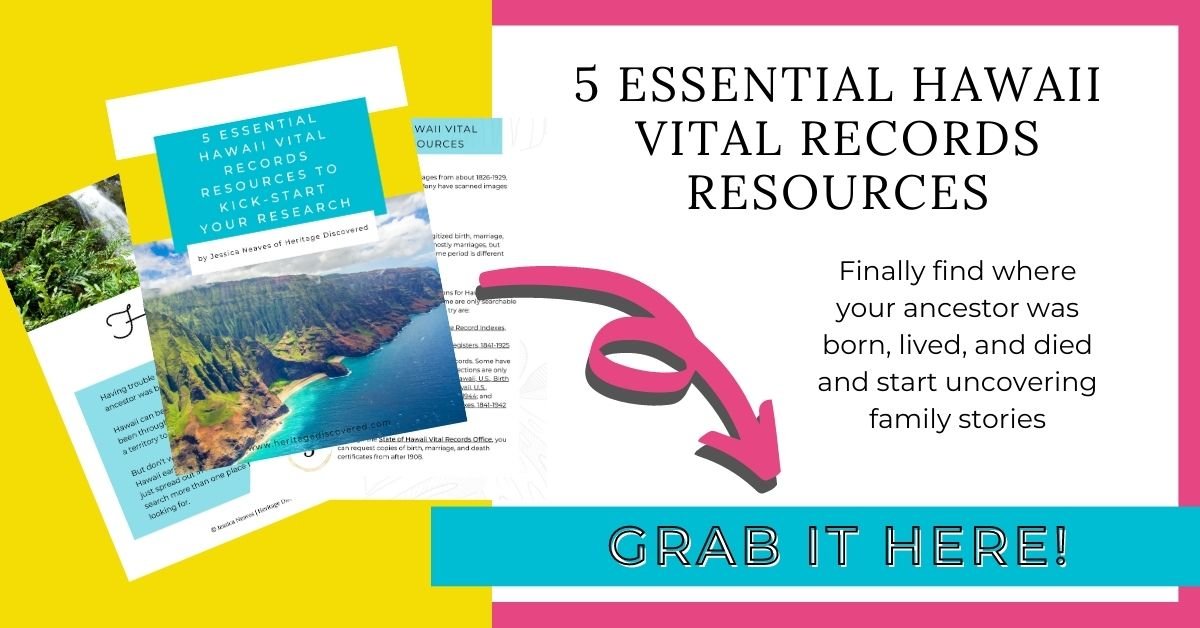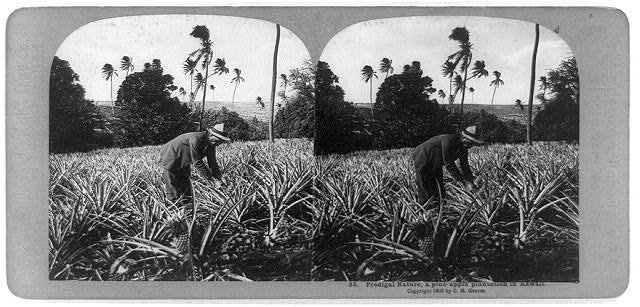8 Important Resources To Research Your Hawaii Plantation Worker Ancestors
*This post may have affiliate links, which means I may receive commissions if you choose to purchase through links I provide (at no extra cost to you). All opinions remain my own.
In the late 1800s through 1900s, thousands of laborers came to Hawaii to work in the growing sugarcane and pineapple plantation industries.
Many people today with roots in Hawaii have at least one ancestor who came to the islands to work on a plantation.
Records about plantation life in Hawaii, as well as personnel records and other documents, can give you more insight into what they experienced day-to-day.
In this article, I share a brief history of the plantations, resources for Hawaii plantation records, and other resources about plantation life.
Related posts:
5 Fantastic Resources To Trace Your Ancestors That Immigrated To Hawaii
How Delayed Birth Certificates from Hawaii Can Benefit Your Genealogy Research
Hawaii plantation history
The first sugar plantations in Hawaii began in Koloa on the Big Island in the 1830s through the 1840s. But the number quickly grew after 1876 when a treaty between the Kingdom of Hawaii and the US opened up the US to import-tax-free sugar from the islands.
The rapid rise of the plantations in Hawaii began due to factors like the Civil War, which led to a significant increase in the price of sugar. The Gold Rush in California also created a new market for sugar sales.
The need for laborers to work in the fields was immense, bringing immigrants from Japan, China, Korea, Puerto Rico, and other ethnic groups. By far, the largest group of migrant laborers came from Japan. Beginning in 1885 and lasting almost 10 years, ships arrived carrying about 29,000 Japanese to Hawaii.
Sugarcane and pineapple plantations made up most of Hawaii’s economy for decades after annexation, led by the “Big Five” corporations of Castle & Cooke, Alexander & Baldwin, C. Brewer & Co., American Factors, and Theo H. Davies & Co.
Missionaries and their families founded most of the Big Five companies, which had great political and economic sway over Hawaii. Although the companies made millions, the immigrant laborers didn’t get to reap any of the rewards.
Hawaii’s plantations began to die out after WWII when the territory’s economy began to shift to other industries.
Related posts:
Museum Archives: How To Use This Unique Resource In Your Research
11 Smart Tips For Using Archives In Your Genealogy Research
Why Should You Use Ethnic Newspapers For Genealogy Research?
Plantation life in Hawaii
Life on the sugar and pineapple plantations was challenging. Plantation workers were not prepared for the backbreaking work they had signed contracts to do. Wages were low and they worked up to twelve-hour days with few breaks. After the sun went down, they carried themselves home to squalid housing.
Plantation owners imposed strict rules and workers faced severe punishment for breaking them, even whippings for violations as small as pausing to stretch. Many fled abandoned their contracts and left Hawaii.
Workers were divided by ethnicity both in how they lived and their wages. Better paying jobs went to European Americans, while Asians and other minorities took manual labor positions. However, even the laborers received different wages based on their ethnicity. Camps were organized by ethnicity to keep the workers from joining together against their conditions.
Related posts:
What To Know About Alien Registration Files And Where To Find Them
10 Terrific Resources For Identifying Your Immigrant Ancestor’s Hometown
What Are Naturalization Records And How Can They Support Your Research?
Hawaii plantation record resources
Here are eight resources you can use when researching your ancestors who lived during the plantation era in Hawaii.
Every plantation had its own way of recordkeeping and some records have been lost, but you may be able to locate your ancestor in these archival collections.
While not all mention specific names, they can still give you a sense of what the plantation was like at the time your ancestor worked and lived there
1) The Hawaiian Sugar Planters' Association Plantation Archives is a very important collection of records of Hawaii sugar plantations. Spanning almost 150 years, the collection has laborer contracts with laborers, personnel records, correspondence, and other company records like the company store and annual reports. It includes many plantations and their subsidiary companies, like the Oahu Sugar Company and the Puna Sugar Company.
2) Filipino Laborers Collection at Brigham Young University contains labor records and passenger lists for about 100,000 Filipino plantation workers in Hawaii. The collection has information on contract workers, including their names, ages, genders, dates of arrival and/or departure, and which plantations they worked at.
Even better is that the records may contain the native town of the worker, their marital status, and the names of spouses and children. They may also show how much money they made and how much they sent home to the Philippines.
3) Kohala Sugar Company Records. The Lyman Museum and Mission House in Hilo has plantation records from four sugar companies: Kohala, Hamakua, C. Brewer, and Hilo Coast Processing. The papers cover from 1857-1996, including personnel files, correspondence, and other business documents.
4) Grove Farm was a plantation in Kauai established in 1854. Located in Lihue, it is now preserved as a museum, with the site listed on the State and National Register of Historic Places. The museum’s archive holds 19th-century operational and employee records.
5) Kilauea Sugar Plantation Company. The Kauai Historical Society holds the Kilauea Sugar Plantation Company papers, which span from 1877 to 1958. The collection has personnel, hospital, labor union, board of directors’ records, and more.
6) Hawaii Plantation Museum is in Papaikou on the Big Island. The museum’s collections include unique items like plantation newspapers from the 1950s and 1960s, high school yearbooks, passenger lists, and other records about plantation workers in Hawaii. They also have artifacts and photos of Hawaii plantation life.
7) Alexander & Baldwin Sugar Museum. Located in Puunene, Maui, the Alexander & Baldwin Sugar Museum has a great archive on sugar plantation workers in Hawaii. The museum holds employment records, photos, artifacts, maps, and other materials related to living and working on the plantations.
The employment records range from the 1920s through the 1940s and have valuable information like their house number, arrival date in Hawaii, type of work performed, and employment dates. The museum also has copies of the Maui record, a quadrilingual newspaper, and other plantation newspapers and magazines.
8) Hawaiian Pineapple Company / Dole Corporation. It is harder to find records for Hawaii pineapple plantations, but the University of Hawaii Manoa has the Hawaiian Pineapple Company/Dole Corporation archives.
While the collection is mostly business records, it does have scrapbooks of newspaper clippings and magazine articles, newsletters, board minutes, and annual reports
Final thoughts
Using Hawaii plantation records in your family history research is a great way to possibly find records about your ancestors and understand more about the time and their everyday lives.
These resources are a great starting point for learning more about your plantation laborer ancestors.
Do you have another plantation resources to share? Let me know in the comments below!




